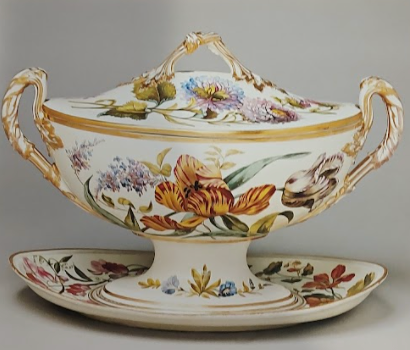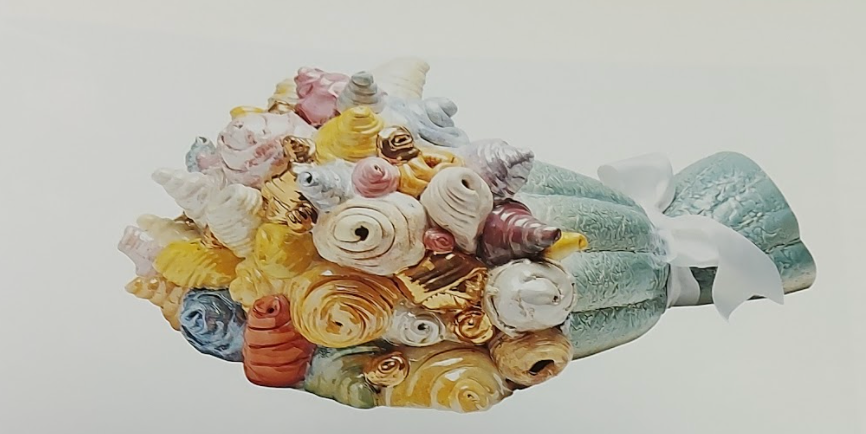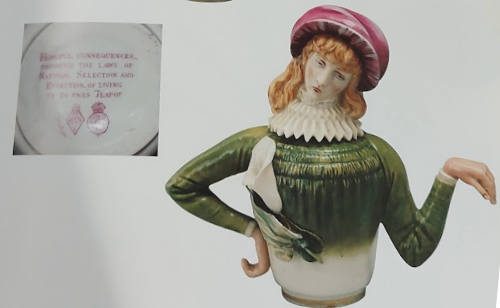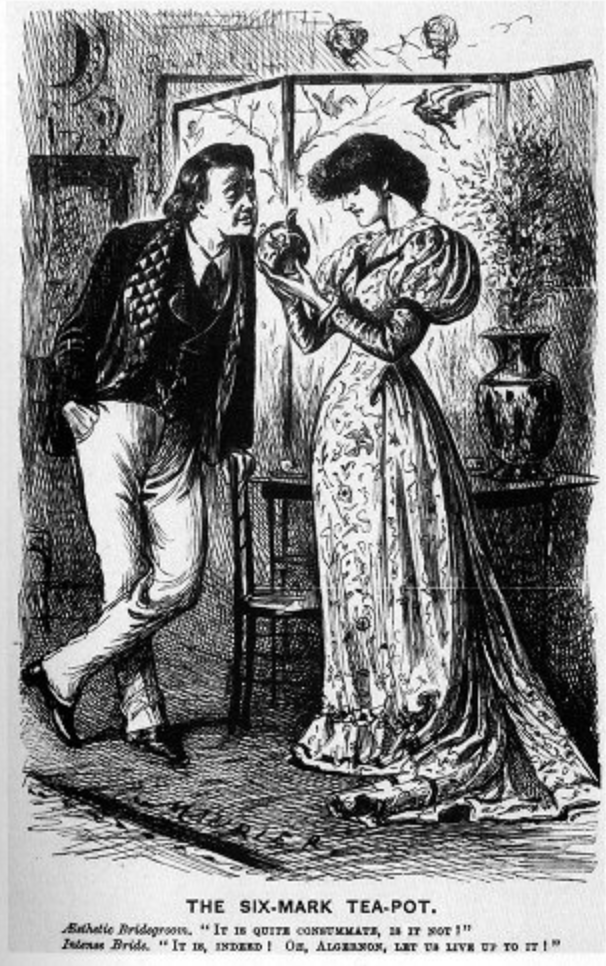Reiko Kaneko
In 2019, Reiko Kaneko launched the ‘Botanical Collection’ a collection inspired by nature. The main spaces that she has been inspired by throughout this project has been the “studio spaces and gardens of women artists including Barbara Hepworth in St Ives and Natalie Du Pasquier in Milan.” (Kaneko, 2019). Alongside this she has also got a studio within her own garden which has also given her inspiration to use leaves to apply the glaze onto the plates and bowls within the collection.
Reiko Kaneko. 2019. Botanical Ceramics Showcase SCP Pimlico Road — Reiko Kaneko. [online] Available at: <https://reikokaneko.co.uk/blog/reiko-kaneko-botanical-ceramics-scp-pimlico-road> [Accessed 19 March 2022].
Flower Power - The Meaning of Flowers in Art
I wanted to look at these two pieces as they were both examples of flowers being used within ceramics. Tureen, cover and stand, used decoration from William Billingsley or William Pegg. Under this piece are the details of the specific flowers used in the piece. This was because botany was popular within the 18th century, a trend that continued within medicine where herbal remedies were being increasingly used.
Bouquet, by Richard Slee is an earthenware ceramic piece that uses lustres for a coloured sheen on top of the flowers. The bouquet is supposed to show the two different and contrasting uses for bouquets – celebration and bereavement. The original use for a bouquet was a for a bride and her bridesmaids to hold on her wedding day or to give to a loved one to say thank you. Even though a bouquet is still used for celebration today, in more recent years, the bouquet has also been adapted to replace wreaths at funerals. The shell-like ceramic bouquet shows a bouquet during a singular moment in time and ‘transcends decay and death’ (Woodruff, 2003).
Woodruff, R et al. (2003) Flower power : the meaning of flowers in art. London: Philip Wilson.

Tureen, Cover and Stand c.1975

Bouquet, 2000
Queen Mary of Moderna, 1673
Queen Mary of Moderna married James II in 1673 even though she wanted to become a nun. The painting of her shown to the left used flower symbolism to show her suitability for marriage. This was common for the time especially as towards the end of the 16th century, botanical illustrations were used to show the different plants being imported to different countries as more flowers were being grown to meet the higher demands of flowers to more countries. In the painting she is picking orange blossom, a plant that symbolises innocence, purity and virtue. This painting was then used as propaganda to show innocence and marital fidelity. Flower symbolism was then used a few years later when Mary was pregnant as she placed a flower on her womb to share the news.
Moore, A. W. et al. (2003) Flower power : the meaning of flowers in art. London: Philip Wilson.
Patented on 21st December 1881, this porcelain teapot designed by R.W. Binns and James Hadley for the Royal Worcester Teapot Company. The teapot was used to make fun of the aesthetic movement, a movement aiming to focus on the production of art that looked good (V&A, 2018), and prominent figures within the movement such as Oscar Wilde.
Underneath the teapot there is an inscription that says ‘Fearful consequences through the laws of Natural Selection and Evolution of living up to one’s teapot.’ This was inspired by the poster ‘The Six-Mark Teapot’ by George du Maurier where an ‘Aesthetic Bridegroom’ and ‘Intense Bride’ say they are going to live up to a blue china teapot which Du Maurier thought was in poor taste to live as a work of art. This cartoon was based off of a comment that Oscar Wilde made as an undergraduate and was another piece of media that was made to laugh at him.
On the teapot the man has a sunflower in his buttonhole and the woman has a Japanese lily in her buttonhole. Both of these flowers are flowers that Oscar Wilde had shown his appreciation for, the Japanese Lily being the flower he declared as his favourite in a confessions album and the sunflower being a flower he had praised in a lecture on ‘The English Renaissance of Art’ and another way that the teapot made fun of him and his values.
The woman on the teapot was first thought to be Archibald Grosvenor, who was a male character in an opera Patience, due to the character wearing a similar buttonhole. This would’ve been another poke at Oscar Wilde whose sexuality wasn’t confirmed to be straight. However in later years the teapot was thought to be Sara Bernhardt, as in 1879, the French actress was greeted in Folkestone by Wilde with an armful of lilies at her feet.
Garibaldi, C. et al. (2003) Flower power : the meaning of flowers in art. London: Philip Wilson.
Victoria and Albert Museum. 2018. V&A · An introduction to the Aesthetic Movement. [online] Available at: <https://www.vam.ac.uk/articles/an-introduction-to-the-aesthetic-movement> [Accessed 20 March 2022].
Bolger Burke, D. and Cooney, A., 1986. In Pursuit of Beauty: Americans and the Aesthetic Movement. New York: Metropolitan Museum of Art New York, p.396.

One side of Aesthetic Double Sided Teapot, 1881

The Six-Mark Teapot, 1880
